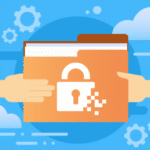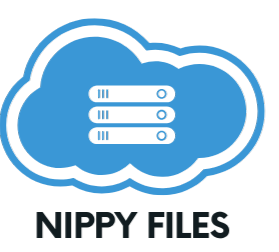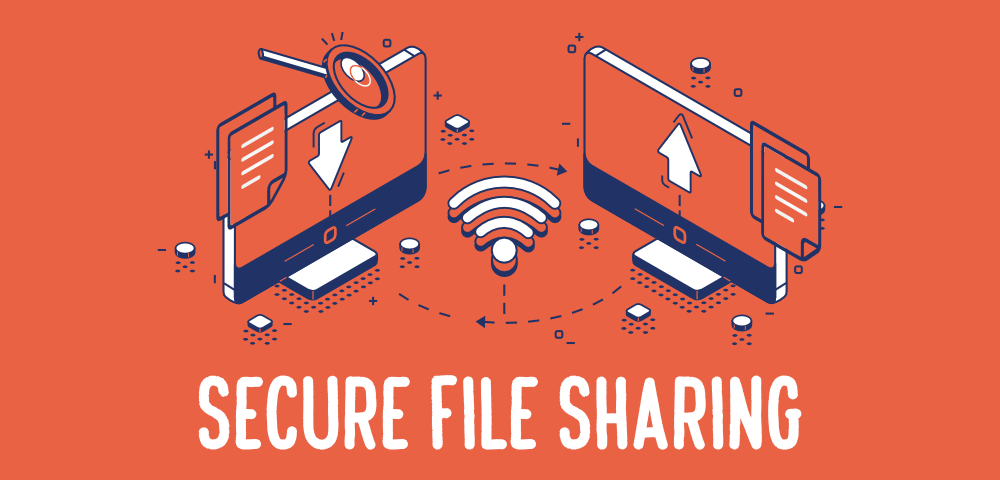
Top Free File Sharing Platforms & How NippyFiles Compares
August 20, 2025In today’s fast-paced digital world, the ability to share files online securely and efficiently is more critical than ever. Whether you’re a remote worker, a business leader, a student, or a creative professional, the need to transfer documents, media, and sensitive data across distances has become a daily necessity. As we step into 2025, the landscape of file sharing online continues to evolve—driven by advancements in cybersecurity, cloud infrastructure, and user privacy expectations.
However, with increased connectivity comes heightened risks. Cyberattacks, data breaches, and unauthorized access are persistent threats. This guide will walk you through the most effective, secure, and future-ready methods to share files online in 2025. From understanding the risks to choosing the right tools and best practices, this is your ultimate roadmap to secure digital file exchange.
Why Secure File Sharing Matters in 2025
The digital transformation of businesses and personal communication has accelerated dramatically over the past few years. According to recent studies, over 80% of global organizations now rely on cloud-based collaboration tools. With remote and hybrid work models becoming the norm, employees are regularly sharing files online from various devices and networks—many of which are not inherently secure.
In 2025, data is not just an asset; it’s a liability if mishandled. Regulatory frameworks like GDPR (General Data Protection Regulation), HIPAA (Health Insurance Portability and Accountability Act), and CCPA (California Consumer Privacy Act) impose strict penalties for data exposure. A single unsecured file transfer could lead to legal consequences, financial loss, or reputational damage.
Moreover, cybercriminals are leveraging AI-driven tools to intercept data, launch phishing attacks, and exploit weak file-sharing practices. Therefore, secure file sharing online is no longer optional—it’s essential.
Common Risks of Unsecured File Sharing
Before diving into solutions, it’s important to understand the risks associated with insecure file-sharing practices:
- Data Interception: Files sent over unencrypted channels can be intercepted by hackers using man-in-the-middle (MITM) attacks.
- Phishing and Malware: Malicious actors often disguise malware as shared files or send fake file-sharing links to steal credentials.
- Unauthorized Access: Public links or weak passwords can allow unauthorized users to access sensitive information.
- Lack of Audit Trails: Without proper tracking, it’s difficult to monitor who accessed a file and when.
- Cloud Misconfigurations: Many cloud storage platforms default to public sharing, which can expose data unintentionally.
These risks underscore the need for a proactive, security-first approach to file sharing online.
Best Methods to Securely Share Files Online in 2025
Here are the top methods and tools that ensure your file transfers remain private, encrypted, and compliant in 2025.
1. Use End-to-End Encrypted File Sharing Platforms
End-to-end encryption (E2EE) ensures that only the sender and recipient can access the file contents. Even the service provider cannot decrypt the data.
Top Platforms in 2025:
- Tresorit: Known for military-grade encryption and GDPR compliance, Tresorit is ideal for businesses handling sensitive data.
- Proton Drive: Developed by the creators of ProtonMail, it offers zero-knowledge encryption and is perfect for privacy-conscious users.
- Sync.com: Combines strong encryption with user-friendly interface and HIPAA compliance for healthcare professionals.
Why It Works: E2EE prevents third parties—including hackers and service providers—from accessing your files, making it the gold standard for secure file sharing online.
2. Leverage Secure Cloud Storage with Advanced Access Controls
While traditional cloud services like Google Drive and Dropbox are popular, their default settings may not be secure enough. In 2025, advanced cloud platforms offer granular access controls and enhanced security features.
Best Practices:
- Enable two-factor authentication (2FA) for all accounts.
- Set expiration dates and password protection on shared links.
- Use role-based access control (RBAC) to limit file access by team members.
- Monitor file activity through audit logs.
Recommended Tools:
- Microsoft OneDrive for Business (with Microsoft Purview compliance)
- Box (enterprise-grade security with DLP integration)
- Egnyte (ideal for regulated industries)
These platforms allow you to share files online while maintaining full control over permissions and visibility.
3. Use Password-Protected and Time-Limited Links
Even if you’re using a reputable platform, always enhance security by adding layers of protection.
How to Implement:
- Generate a shareable link that requires a password.
- Set an expiration date (e.g., 24 hours or 7 days).
- Disable download options if viewing is sufficient.
This approach minimizes the risk of long-term exposure and ensures that only authorized recipients can access the file.
4. Encrypt Files Before Uploading (Client-Side Encryption)
For maximum security, encrypt your files locally before uploading them to any cloud service.
Tools to Use:
- VeraCrypt: Free open-source tool for creating encrypted file containers.
- 7-Zip with AES-256: Compress and encrypt files using strong encryption standards.
- Cryptomator: Lightweight tool that encrypts files before syncing to cloud storage.
Tip: Share the decryption password through a separate channel (e.g., encrypted messaging app like Signal) to prevent interception.
5. Adopt Zero-Knowledge File Sharing Services
Zero-knowledge platforms ensure that the service provider has no access to your encryption keys or file content. This means your data remains private even if the provider is compromised.
Leading Zero-Knowledge Providers:
- pCloud (with optional pCloud Crypto)
- SpiderOak One
- Internxt Drive
These services are ideal for individuals and organizations that prioritize privacy above all.
6. Use Secure File Transfer Protocols (SFTP, FTPS, HTTPS)
For technical users or businesses transferring large volumes of data, secure protocols are essential.
- SFTP (SSH File Transfer Protocol): Encrypted file transfer over SSH.
- FTPS (File Transfer Protocol Secure): FTP with SSL/TLS encryption.
- HTTPS: Secure web-based transfers via encrypted connections.
These protocols are commonly used in enterprise environments and offer high-speed, secure file sharing online with authentication and encryption.
7. Utilize Blockchain-Based File Sharing (Emerging in 2025)
A growing trend in 2025 is the use of decentralized, blockchain-powered file-sharing networks. These platforms store files across distributed nodes, eliminating single points of failure.
Examples:
- Filecoin: Decentralized storage network with built-in encryption.
- Storj: Offers end-to-end encrypted, peer-to-peer cloud storage.
While still maturing, blockchain-based solutions promise enhanced security, censorship resistance, and reduced reliance on centralized providers.
Best Practices for Secure File Sharing in 2025
Technology is only part of the solution. Human behavior and organizational policies play a crucial role in maintaining security. Follow these best practices:
1. Educate Users on Security Awareness
Train employees and collaborators on recognizing phishing attempts, using strong passwords, and avoiding public Wi-Fi for file transfers.
2. Implement Multi-Factor Authentication (MFA)
Always enable MFA on all accounts used for file sharing online. This adds an extra layer of identity verification.
3. Regularly Audit Shared Files
Periodically review who has access to your files and revoke permissions for outdated or unnecessary shares.
4. Avoid Email for Large or Sensitive Files
Email attachments are often unencrypted and have size limits. Use secure file-sharing platforms instead.
5. Classify Data by Sensitivity
Not all files require the same level of protection. Use data classification to apply appropriate security measures:
- Public: No restrictions.
- Internal: For team use only.
- Confidential: Requires encryption and access controls.
- Highly Sensitive: Legal, financial, or personal data—use E2EE and audit trails.
6. Keep Software Updated
Ensure your operating systems, apps, and antivirus software are up to date to protect against known vulnerabilities.
Choosing the Right File Sharing Tool for Your Needs
With so many options available, selecting the right platform depends on your specific requirements:
Always evaluate tools based on:
- Encryption standards (AES-256, TLS 1.3)
- Compliance certifications (GDPR, HIPAA, SOC 2)
- User access controls
- Customer support and uptime
The Future of File Sharing Online
As we look beyond 2025, several trends will shape the future of file sharing online:
- AI-Powered Security: Platforms will use AI to detect anomalies, block suspicious downloads, and automatically classify files.
- Quantum-Resistant Encryption: With quantum computing on the horizon, file-sharing services will adopt post-quantum cryptography to stay ahead of threats.
- Integrated Collaboration Suites: Secure file sharing will be embedded within broader productivity platforms (e.g., Notion, ClickUp) with real-time editing and version control.
- Biometric Access: Facial recognition and fingerprint authentication may replace passwords for accessing shared files.
Staying informed about these advancements will ensure your file-sharing practices remain secure and efficient.
Final Thoughts: Secure File Sharing Is a Must in 2025
The ability to share files online is fundamental to modern communication and collaboration. However, convenience should never come at the cost of security. In 2025, the tools and knowledge to protect your data are more accessible than ever.
By adopting end-to-end encrypted platforms, using strong access controls, encrypting files locally, and following best practices, you can confidently share files without compromising privacy or compliance.
Remember: every file you share is a potential entry point for cyber threats. Make security a priority—not an afterthought.




